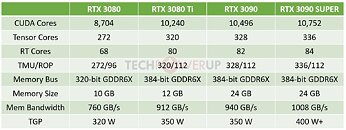
Client Interest in Samsung Foundry Reportedly Buoyed by Nintendo Switch 2 SoC Production Deal
The Nintendo Switch 2 hybrid console is due to launch globally next Wednesday (June 4). The highly anticipated next-gen handheld is powered by a custom NVIDIA processor. To the surprise of many industry watchdogs, both parties have semi-recently disclosed a couple of technical details regarding their fruitful hardware collaboration. Historically, Nintendo has guarded many aspects of its past generation hardware. Throughout the 2020s, data miners and leakers have unearthed plenty of pre-release information—leading to theories about the Switch 2 chipset's origins. During the Switch 1 era, TSMC was the chosen manufacturing partner. NVIDIA's off-the-shelf Tegra X1 mobile SoC powered the first wave of Nintendo Switch (2017) devices, in 20 nm form. A 2019 revision resulted in Switch Lite and (refreshed) Switch models being equipped with a more efficient 16 nm solution, also present within 2023's premium OLED variant.
Since then, Switch 2's alleged NVIDIA Tegra T239 SoC was linked to a Samsung 8 nm node process. Earlier this month, extremely brave Chinese leakers produced "full die shot" evidence of South Korean foundry origins. Bloomberg insider news articles have implied that Samsung Semi's mature 8 nm FinFET node is better suited—rather than an equivalent TSMC product—for the Switch 2's custom NVIDIA chipset. Unnamed sources have mentioned critical factors; namely stable production and process compatibility. Industry moles reckon that Samsung leadership is actively and aggressively pushing for a longer Switch 2 chipset production deal. Renewed terms could include a future die shrink; pre-launch analysis indicates a sizeable 207 mm² footprint. Beyond foundry biz negotiations, additional murmurs suggest company executives dangling an OLED panel supply agreement. Industry experts have viewed Samsung's key entry—into the gaming console chip market—as a seismic development. A DigiTimes article dives into a so-called "tripartite cooperation"—involving Nintendo, NVIDIA, and the South Korean semiconductor giant. The Samsung Foundry has floundered and struggled in recent times, but is keen to catch up with its arch rival. Fresh rumors have AMD and Sony considering Samsung's chip making channels; possibly with futuristic PlayStation hardware in mind.
Since then, Switch 2's alleged NVIDIA Tegra T239 SoC was linked to a Samsung 8 nm node process. Earlier this month, extremely brave Chinese leakers produced "full die shot" evidence of South Korean foundry origins. Bloomberg insider news articles have implied that Samsung Semi's mature 8 nm FinFET node is better suited—rather than an equivalent TSMC product—for the Switch 2's custom NVIDIA chipset. Unnamed sources have mentioned critical factors; namely stable production and process compatibility. Industry moles reckon that Samsung leadership is actively and aggressively pushing for a longer Switch 2 chipset production deal. Renewed terms could include a future die shrink; pre-launch analysis indicates a sizeable 207 mm² footprint. Beyond foundry biz negotiations, additional murmurs suggest company executives dangling an OLED panel supply agreement. Industry experts have viewed Samsung's key entry—into the gaming console chip market—as a seismic development. A DigiTimes article dives into a so-called "tripartite cooperation"—involving Nintendo, NVIDIA, and the South Korean semiconductor giant. The Samsung Foundry has floundered and struggled in recent times, but is keen to catch up with its arch rival. Fresh rumors have AMD and Sony considering Samsung's chip making channels; possibly with futuristic PlayStation hardware in mind.

















































